Household Waste and Its Place in the Garden
Flat-out, no arguments, the debate over, we as a society are producing far too much waste, and we’ve been doing it for far too long. It’s not sustainable. The earth is suffering, the environment giving way to the age of rubbish, to swirling masses of garbage in the ocean and oceans of garbage on the land. And, while there is much blame to be put on evil corporations and urbanization, a lot of waste is produced in just the average household, our homes, but luckily, there are ways to change that.
As practitioners of permaculture, we should be at least striving to create waste-free environments, finding methods to cycle everything we use into productive systems rather than destructive messes. Unfortunately, the inefficient design webs in which we are caught mean that it takes extra effort on our parts to make things right. Reducing our waste means bucking current trends and rediscovering what works best for us and nature. So, the garden is a great place to start.
Compost is a no-brainer.
It is absolutely absurd that organic matter takes up large percentages of our landfills. From suburban lawn clippings to kitchen scraps to cardboard, we have not only wasted valuable composting material, but we have contaminated it such that it can’t even do go back to the earth as a positive. Something like over half of our landfills are composed of perfectly wonderful organic mass. Not only has it now used up resource, but it has also become a further burden on the finite space available on the planet.
Composting is a major (and obviously useful) part of what we could be doing. Operating a simple compost bin at home will help enrich the landscape with nutritive soil to spread over gardens or beneath trees. As well, creating in situ composts such as banana circles or simple holes that can eventually be fertile mounds of soil means no effort in turning or moving the piles. Additionally, old cardboard boxes and paper are great for sheet mulching, and vermiculture is a fantastic way to quickly convert vegetable and fruit scraps.
Greywater is a godsend.
Another shocking thing we do in modern houses is sending gray water off the property rather than getting double-duty by using it to feed plants. In truth, plants are not all that concerned about a little debris in the water, but it’s easy enough to get it cleaned up for cleaner irrigation. The first step, however, is rerouting sink and shower drains so that the greywater stays on our property instead of unnecessarily clogging up overworked public water treatment systems.
While it is true that most greywater does need a little filtering before being used with plants, there are many easy solutions. Mulch pits are one amazing solution, and these essential consist of digging holes near gardens or fruit trees. The holes are filled with mulch—leaves, twigs and branches—that will host a gang of soil life that will handle the cleaning process while the water seeps into the soil. Plus, this creates a load of compost. Other options are reed beds, which can create a wetland. Then, there are even simpler options like cooling water from cooking, say boiling potatoes or pasta, and dumping it directly on plants, a touch of extra nutrients to boot.
Any poop is good poop.
Classically, even these days, using animal manure in gardens is widely practiced, though just as common are the poorly designed and pollutant feedlot pools, but to the point, human waste is another resource most of us are literally flushing down the toilet, misusing precious freshwater and missing out on a valuable—that’s right—material for the garden and house. Composting toilets, even the fancy new ones, may gross some people out, but that doesn’t mean we all have to be foolish.
Ironically, many first world aid organizations have introduced effective sanitation methods to third world countries, yet most of us continue to practice the same old destructive way. Human manure can be directed to biodigesters, which capture methane gas created in the decomposition of the waste, biogas that could be used to cook and heat with. What’s more, the final result of all the waste would be a rich, clean fertilizer for our trees and fields. Instead of fouling liter upon liter of fresh water, we produce our own energy source and/or chemical-free soil revitalizer.
Nearly anything is useful.
Some items, of course, aren’t going to break down nicely into plant food, but that’s not to say they can’t be helpful in the garden. Before throwing anything away or recycling it, we’d do better to consider how it might be reused effectively. The permaculture way is to turn problems (waste) into solutions, and with some creative thinking, possibilities abound while wastefulness dwindles. There are too many examples to list, but…
• Plastic bottles make great planters, including very cool vertical gardens and self-watering planters. They make good watering cans (instead buying more plastic or metal), can be used to construct greenhouses, or cleaned and stuffed with plastic wrappers to create eco-bricks.
• Glass bottles and jars can also be used for sleeker self-watering planters, slow-release irrigation in garden beds or holders for rooting clippings, not to mention reusing them for kitchen products like homebrewed apple cider, other ferment beverages, pickles, preserves, and more.
• Used packaging, like bags from coffee or rice, can be opened carefully and reused for storing the next batch of beans from the garden or containing seed collections. If they don’t have labels, they can even be reused as packaging for products, perhaps organic teas or dried herbs, made on site.
The point here is not that these are the only uses for these items, or even that these are the only items that can be reused. A broken broom handle can be a stake for tomatoes, or a discarded chest of drawers might a great lettuce planter for a few years. The point is that, rather than first turning to the city dump, we should be envisioning how we might turn our garbage into a resource. It can be done, it should be done, and doing so will make a difference, a positive cycle out of negative consequence.
Even so, even before we start reusing our trash, we should focus on creating less of it to begin with. If there is no system in place to reuse the waste we are accumulating, then we should find a way not to produce that waste in the first place. For a sustainable existence, that thing we are striving for, there must be an efficient, useful cycle in place such that our waste is a valuable commodity, a piece of the puzzle we are working on. Let it start at home and the companies will follow.



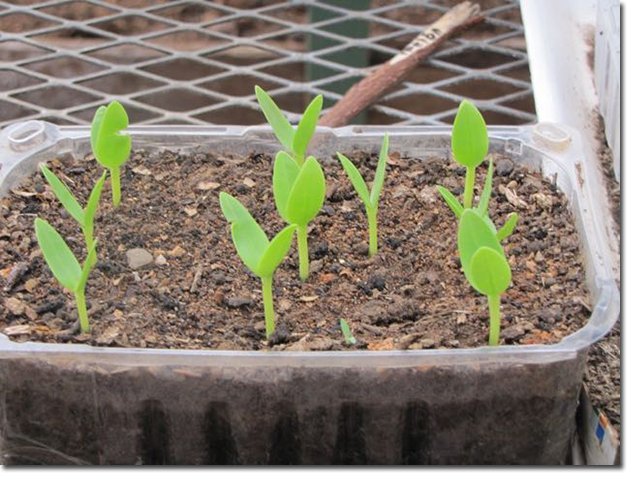
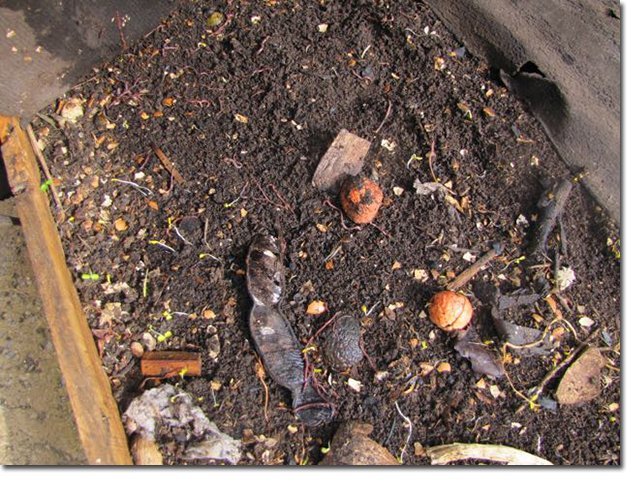
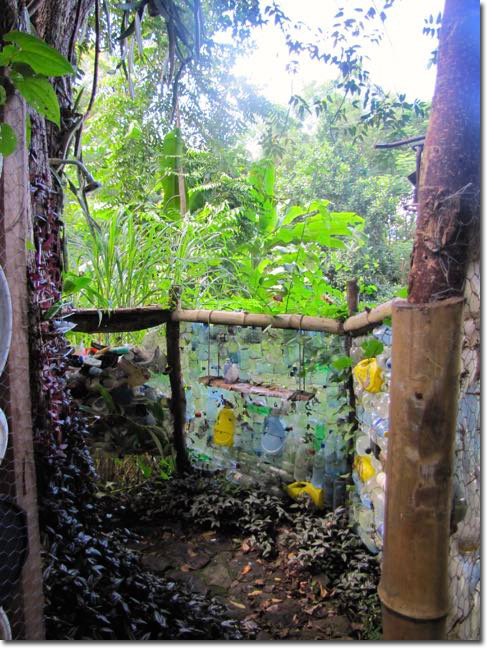
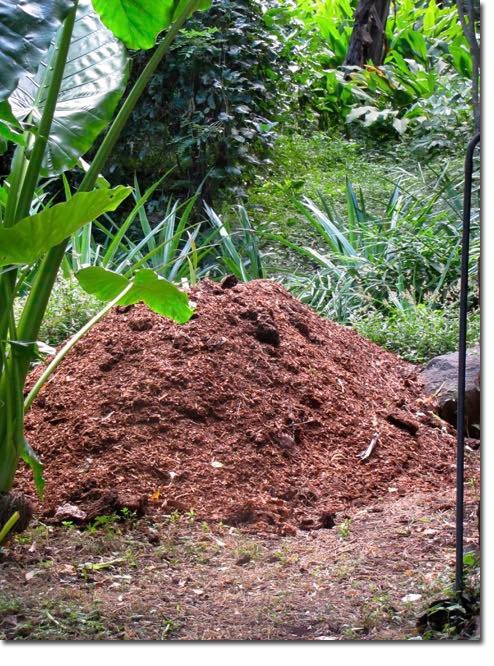

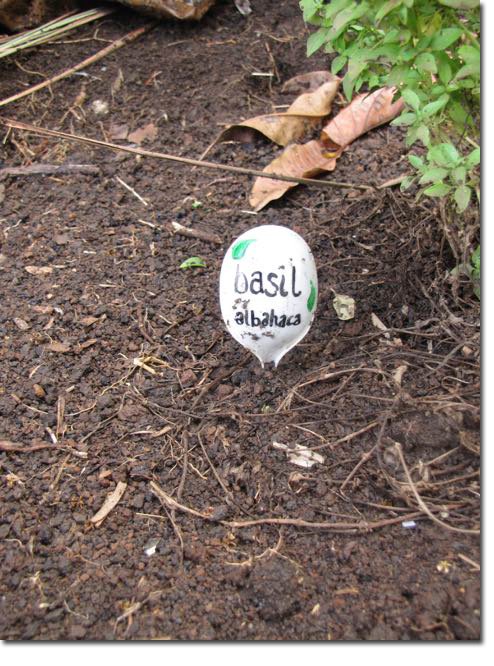










Nice! For plant labels I use that hard plastic ribbon stuff which they use to tie and protect boxes and packages during transit, one piece from a lare box makes at least 50 labels, you can loop and staple them for fruit tree branches too
What a great idea–thanks for sharing. I’d love it if the comments here would just become an amazing collection of the ways we’ve all discovered to make use of our garbage in the garden. It’d be such a great resource.
Cool idea, and useful. Kind of standardizes labeling. What is good to use for writing on the labels so that it doesn’t wash off or bleach out /
I use permanent markers for plastic labels, but most of those do bleach out if I leave the labels outside for a whole year (don’t know if it’s the sun or the frost). A simple medium soft pencil works well enough for rough surfaces like wood. (Graphite doesn’t bleach.) The packaging strips Diggman recommended mostly come in black and with too rough structuring to write on, where I come from, so I haven’t tried writing on those. However, if yours are of a lighter color and just rough enough to take pencil lead, you might try those thick wax crayons used by small children, which probably will stick better to the plastic than graphite. Acrylic paint should stick to plastic as well and be waterproof – artist’s paints are designed to be light-stable. Or mix india ink / soot from a candle flame into some transparent varnish or clear all-purpose glue – that shouldn’t bleach out, ever. In a pinch you could try some cheap nail polish. When I was little, my mother and I decorated easter eggs with nail polish and those colors haven’t faded in 25 years. (Though of course the eggs are a seasonal decoration – they spend most of the year in a dark cupboard.)
I’m also saving all those plastic containers from meat and the occasional buying of packaged fruit (the latter are higher and already have holes in the bottom) for seeding purposes. Sadly, the plastic gets brittle after a year in the sun, so I usually can’t re-use them more than once or twice.
Those little plastic yoghurt pots would also work well for single plant seedlings, though I don’t do that on account of not eating much single-portion yoghurt, and having more than enough actual flower pots on account of my parents never throwing one away when buying plants for the garden for the last 20+ years.
I’ve made some labels by cutting up the plastic bottles that detergents come in, but usually I can’t get more than a few out of them because the bottles have wavy anti-slip surface structuring. I’ve tried cutting up the larger plain yoghurt pots that I buy, but I’ve found that the plastic is already too thin to hold up as a label. (I live in acountry where there’s a law that companies have to contribute money to a national recycling system for all plastic / cardboard / metal packaging – which, unlike the un-recycled houshold waste, doesn’t cost the consumer a direct fee for dooorstep collection – so the companies have been trying to cut down on the weight of the packaging. Incidentally, I always wonder with those bottle gardens: Do people not have to pay deposit on those glass or PET bottles in other countries? 20 cents a piece is a bit dear to just cut them up for construction material. And eventually, the cut-up PET bottles will go into the mixed plastic trash (which mostly gets burned for heat because it doesn’t pay to try to seperate it) instead of getting collected seperately with the deposit system, to produce a clean PET resource that can be used to make new bottles.) I had been using some wooden tongue depressors left over from a doctor’s retirement, but those rot through within a year. But I don’t want to buy dedicated plant labels (too expensive – and really, it’s just bits of plastic!) That plastic spoon method is a really good idea! I think I bought a pack years back to keep in my bag during university, so I could bring home-cooked meals instead of relying on fast food but wouldn’t lose the cuttlery all the time.
One useful trick for colder climates is using large-ish marmelade glasses or similar for frost-protection of early plantings, just like a cloche or mini-greenhouse. You have to lift them occasionally for air exchange and be careful not to cook your plants on sunny days, but they do help with those last frosty nights. (In Central Europe, we have daytime temperatures high enough for plant growth in April and sometimes even in March, but night-time frosts can come until late May, so just protecting the plants from night-time frosts effectively extends the growing season by over a month.)
I also have a habit of constructing raised beds and compost containers out of old furniture that would otherwise be only fit for trashing (i.e. partially broken wardrobes, kitchen compartments, the metal framework of office desks used to give structural strength to some cheap thin pine planks or chicken wire). Added benefit is that the resulting beds are higher than usual and thus don’t strain my eldery mother’s back. Also, they retain somewhat more water due to the higher mass and the extra space for lots of slow-rotting woody cuttings and not-yet-rotted green material. The old furniture frames don’t last more than 5-7 years with the constant watering (especially the press board stuff used in cheap furniture in the 80s and 90s), but I figure it’s still better than buying new wood. Maybe the glue in the furniture isn’t entirely safe fore growing edibles, but… meh. I’t can’t be worse than the dozens of sprayings with pesticides and herbicides that supermarket vegetables have gone through. (I can’t afford to buy organic food, but I can grow some of my own on a 10 Dollar / year budget for seeds and a little extra fertiliser.)
Amazing write up. Thanks so much for taking the time to share with us all.